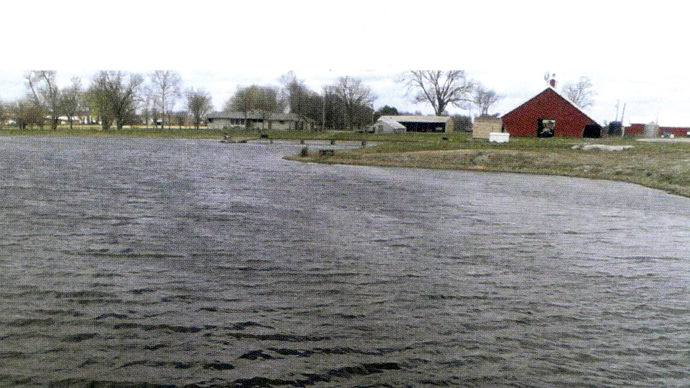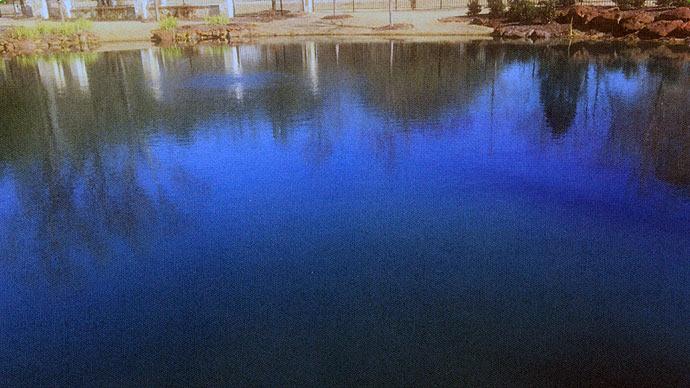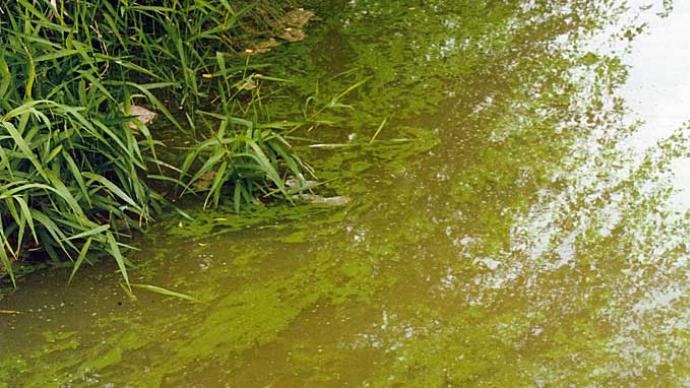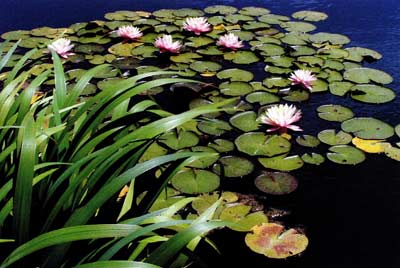
We've all seen them: ponds with bright blue water that look like they are in the Caribbean or an exotic place far away from our part of the country.
What in the world causes a pond to look so blue?
Pond dye, that's what.
In conversations with pondmeisters, I often ask why they use dyes. I'm curious. Their logic runs the gamut from trying to clear muddy water to trying to prevent aquatic plant growth or take out a dense algae bloom. Or, just to make a pond look more attractive.
There are quite a few myths and misconceptions about pond dye.
"Pond dye will kill a plankton bloom." Uh, no, it won't. Pond dye is inert. It has no active ingredient to change a plankton bloom, only color it. It simply changes the color of the water. The argument is that dye will filter sunlight's UV rays, which is mostly true, depending on the dye. Plants need UV rays to grow. The misconception is that plants will die if they don't have sunlight's rays.
However, if those plants are established, they'll still exist, still grow, and still be where they were before the dye was applied.
Essentially, dye will prevent plant growth below its depth of UV inhibition but will not kill established plankton.
"So, it will stop rooted plants from growing any denser." Nope, it won't. If plants are established and thriving, dye can't stop them.
"Dye will clear up muddy water." It won't do that, either. It can't...remember, it's inert. Muddy water is that way for a reason—or reasons. If microscopic clay particles are suspended in the water column, the dye has no mechanism to change it. It can only color the mud and trick us into thinking it's working to clear the water. It isn't. If the water becomes less turbid, dor.": credit the dye. There's another reason.
"Dye will protect my fish from being eaten by predators." Maybe so, maybe not. The logic? Cormorants or otters can't see the fish because the water isn't clear. Truth? It depends on how clear the water was before adding the dye. Predators are adept at adjusting. Blue water might deter them—heavy on the word "might."
"Dye makes the water pretty". Well, I can't argue that point. It's that "eye of the beholder" thing.
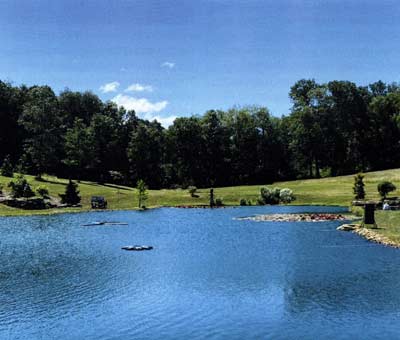
What about the upsides and some truths about pond dye?
There are a variety of colors, but the main ones are blue and black. But you can buy yellow, green or even pink. Those colors filter other wavelengths of light. Your level of expertise can assist that part of the decision-making process.
If you manage your pond as a fishery, be picky about how you use dyes. It makes good sense to use blue dye in late winter, heading toward spring, to push back the start of filamentous algae. Dye can help prevent aquatic plant growth early in the season, but if you wait too long, you can inhibit the start of your food chain by limiting a plankton bloom. That can affect the survival rates of newly hatched fish.
Timing is important.
Black dye gives your pond a more "natural" look, or mix it with blue. If you want your pond to look green, use green dye.
Refrain from assuming dye is some magic bullet for pond management. It's a tool in your management toolbox. It can be a helpful tool, or it can be something that simply does no harm. Or, it can inhibit the growth of some things your pond could actually benefit from.
That's why it's essential to understand what dye is and how to use it.
Reprinted with permission from Pond Boss Magazine

